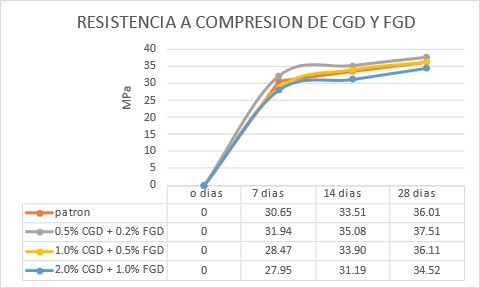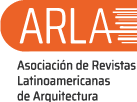Influence of ash and Gallus Domesticus fiber on the properties of concrete
DOI:
https://doi.org/10.51372/gacetatecnica261.3Keywords:
Gallus Domesticus ash, Gallus Domesticus fiber, Rachis, fine aggregate, coarse aggregate, concrete propertiesAbstract
The research article presented deals with the experimental design adding ash and fiber from Gallus Domesticus. Methods from similar applications were reviewed to obtain optimal dosages of ash at 0.5%CGD, 1.0%CGD and 2.0%. CGD, on the other hand, in the fibers was 0.2%FGD, 0.5%FGD and 1.0%FGD instead. In order to improve the properties of the concrete, they were evaluated in a fresh and hardened state, performing compression and bending tests at 7, 14 and 28 days, analyzing three samples for each design, in this case ash and fiber were added according to the cement weight. the objectives, the temperature, workability and unit weight test was carried out, and it was also verified after 28 days, observing with the latter that with the addition of 0.5%CGD and 0.2%FGD maximum results were obtained. compression of 37.51MPa, exceeding the standard design by 4.15%, on the other hand, in the flexural strength with the addition of 1.0%FGD and 0.5%FGD The maximum resistance of 6.03MPa was obtained, having an increase of 27.35% compared to the standard design
Downloads
References
A. Zamora y G. Polar, “Análisis del Sector construcción en el Perú debido al impacto originado por la pandemia del covid-19, los casos dedos obras privadas y dos obras estatales”, Tesis, Perú, Disponible en: http://hdl.handle.net/20.500.12404/24156, 2022
S. Ali y M. Khizar, “Compuestos de cemento mezclado con ceniza: opción ecológica y sostenible para el uso de ceniza de mazorca de maíz”, Departamento de Ingeniería Civil, Nº 175, pp.442-455, Pakistán, Doi: 10.1016/j.jclepro.2017.12.050, 2017
B. Correia et al, “Influencia del pretratamiento químico en la puzolanicidad de micropartículas de vidrio reciclado utilizadas como sustituto del cemento Portland”, Materiales de Construcción, Vol. 74, Nº 354, Doi: 10.3989/mc.2024.362723, 2024
J. García et al, “Ultra-high-performance concrete with local high unburned carbon fly ash”, Revista DYNA, Vol. 88, Nº. 216, pp. 38-47, Doi: 10.15446/dyna.v88n216.89234, 2021
P. Jha et al, “Agro-waste sugarcane bagasse ash (ScBA) as partial replacement of binder material in concrete”, Elsevier, Vol. 44, pp. 419-427, DOI: 10.1016/j.matpr.2020.09.751, 2021
C. Sotomayor, “Entendiendo a las fisuras y grietas en las estructuras de concreto”, Articulo Técnico, Perú, Disponible en: http://consultcreto.com/pdf/entendiendo.pdf, 2020
K. Monsalve et al, “Patologías de la estructura vial del pavimento rígido”, Formación Estratégica, Vol. 3, Nº. 1, España, Disponible en: https://acortar.link/uskVyD, 2022
C. Pavithra et al. “Comportamiento del hormigón añadiendo pluma de pollo como fibra con sustitución parcial del cemento por polvo de cáscara de anacardo”, Elsevier, Vol. 43, pp. 1173-1178, Doi: 10.1016/j.matpr.2020.08.731, 2020
W. Gustavo Valencia, D. Angulo, et al, “Resistencia química de concretos de activación alcalina ceniza volante/ escoria: Sulfatos y ácidos”, Informador Técnico, VOL. 1, Nº. 82, pp. 67-77, Doi: 10.23850/22565035.1351, 2018
N. Perez y C. Sandoval, “Concrete hydraulic modified with silica obtained of the rice husk”, Ciencia e Ingeniería Neogranadina, Vol. 27, Nº 1, pp. 91-109, Doi: 10.18359/rcin.1907, 2016
E. Aydin y H. Arel, “Datos sobre las propiedades físicas y mecánicas de los compuestos de pasta de cemento de cenizas volantes de alto volumen”, Elseiver, Vol. 16, pp.321-326, Doi: 10.1016/j.conbuildmat.2017.09.08, 2018
A. López, et al, “Desempeño de la adición de ceniza de bagazo de caña como filler para producir concretos autocompactantes”, ALCONPAT, Vol. 13, Nº. 1, pp. 80-96, Doi: 10.21041/ra.v13i1.642, 2023
T. Ramos et al, “Mortero con cenizas de residuos de madera: Resistencia a la carbonatación y expansión ASR”, Elseiver, Vol. 49, Nº 19, pp. 343-351, Doi: 10.1016/j.conbuildmat.2013.08.026, 2013
E. Laban et al, “Resistencia del concreto con incorporación de fibras de caña de azúcar y ceniza de carbón de madera”, Ciencia Latina Revista Multidiciplinar, Vol. 6, Nº 6, pp.11116-11135, Doi: 10.37811/cl_rcm.v6i6.4188, 2022
J. Betancourt et al, “Revisión sobre el uso de fibras en concretos y su comportamiento mecánico”, Revista Academia Journals, Vol. 10, Nº 7, pp.153-158, Disponible en: https://acortar.link/DepoxK, 2018
J. Carrión y S. Paramo, “Flexural Tests of Concrete Slabs-on-Ground Reinforced with Steel Fibers”, Ingeniería, investigación y tecnología, Vol. XVII, Nº. 3, pp. 317-33, Doi: 10.1016/j.riit.2016.07.003, 2016
Y. Olivera et al, “Systematic Literature on the Improvement of the Mechanical Properties of Concrete with Fibers of Artificial-Natural Origin” Revista Ingenieria, Vol. 27, Nº. 2, pp. 1-18, Doi: 10.14483/23448393.18207, 2021
R. Dhilipkumar et al, “Investigación experimental sobre ecología de concreto utilizando fibra natural como pluma de pollo” Revista Internacional de Investigación Innovadora en Ciencia, Ingeniería y Tecnología, Vol. 7, Nº. 3, pp. 2461-2468, Doi: 10.14483/23448393.18207, 2018
I. Soto et al, “Propiedades físicas y mecánicas del hormigón usando polvo residual de desechos orgánicos como reemplazo parcial del cemento” Revista Ingeniería de Construcción, Vol. 33, Nº. 3, pp. 229-239, Doi: 10.4067/S0718-50732018000300229, 2018
P. Winne et al, “Tratamiento de Fibra Natural para Aplicación en Pavimentos de Concreto”, Hindawi, Vol. 13, Nº. 1, pp. 1-13, Doi: 10.1155/2021/6667965, 2021
ASTM C136/C136M-19, “Standard Test Method for Sieve Analysis of Fine and Coarse Aggregates” West Conshohocken, PA: ASTM International, 2019
ACI Committee 211, “Guide for Selecting Proportions for High-Strength Concrete with Portland Cement and Fly Ash”, ACI 226.4R, ACI Material Journal, 90, 272-283, 1993
NTP 339.184, “NORMA TECNICA PERUANA NTP 339.184”, Dirección de Normalización - INACAL, San Isidro, Lima, Perú, 2021
NTP 339.034, “NORMA TÉCNICA NTP 339.034”, Dirección de Normalización – INACAL, San Isidro, Lima, Perú, 2015
NTP 339.046, “NORMA TÉCNICA NTP 339.046” Comisión de Normalización y de Fiscalización de Barreras Comerciales No Arancelarias – INDECOPI, Lima, Perú, 2008
P. Kumar y P. Monteiro, “Concreto, propiedades y materiales”, Primera edición, ISBN: 968-464-083-8. Disponible en: https://es.scribd.com/document/591736662/Concreto-Mehta-Monteiro, 1998
J. Ruiz y G. Ruiz, “Modelo analítico para el análisis de la flexión y la fisuración en secciones de hormigón armado como alternativa al diagrama de pivotes” Sciencia Direct, Vol. 68, Nº. 282, pp. 147-154, Doi: 10.1016/j.hya.2017.04.007, 2017
NTP 339.079, “NORMA TÉCNICA NTP 339.079” Comisión de Normalización y de Fiscalización de Barreras Comerciales No Arancelarias – INDECOPI, Lima, Perú, 2012

Published
How to Cite
Issue
Section

This work is licensed under a Creative Commons Attribution-NonCommercial-ShareAlike 4.0 International License.
The opinions expressed by the authors do not necessarily reflect the position of the editor of the publication or UCLA. The total or partial reproduction of the texts published here is authorized, provided that the complete source and electronic address of this journal is cited. Authors have the right to use their articles for any purpose as long as it is done nonprofit. The authors can post on the internet or any other media the final approved version of their work.






.png)




